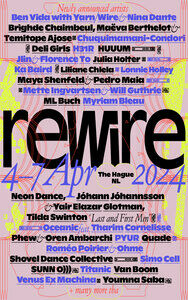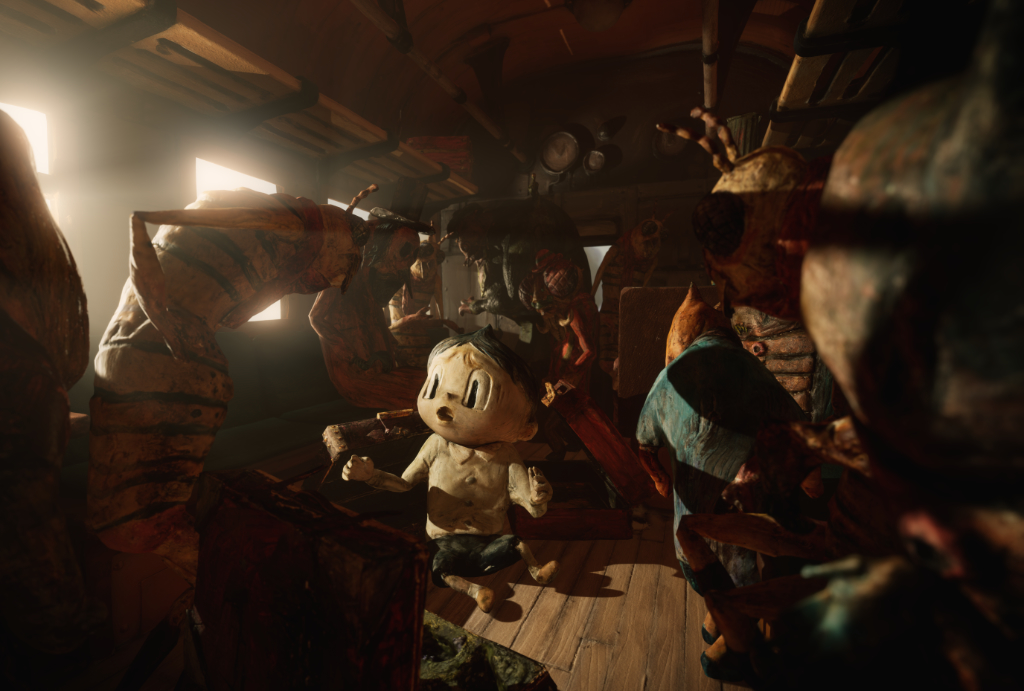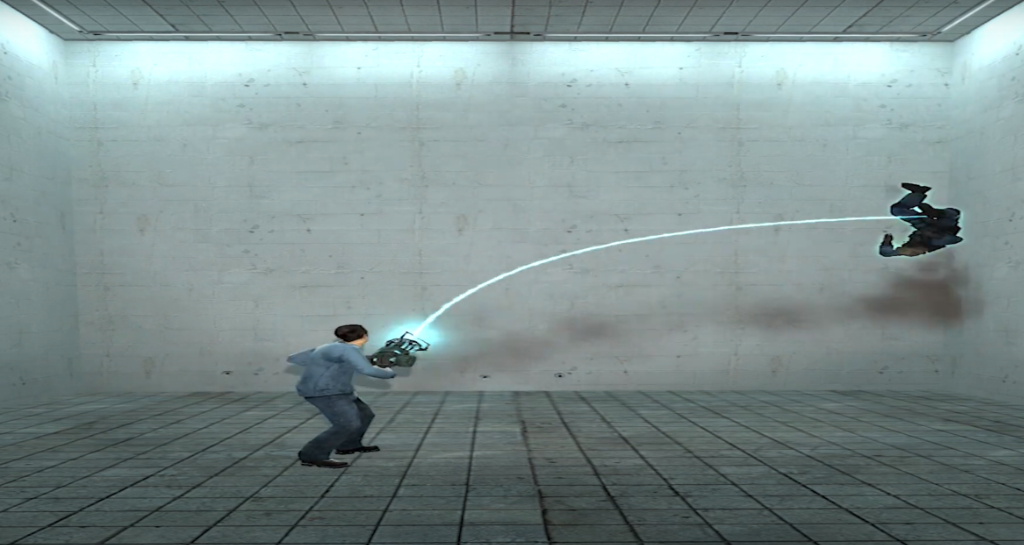Interview by Ana Prendes
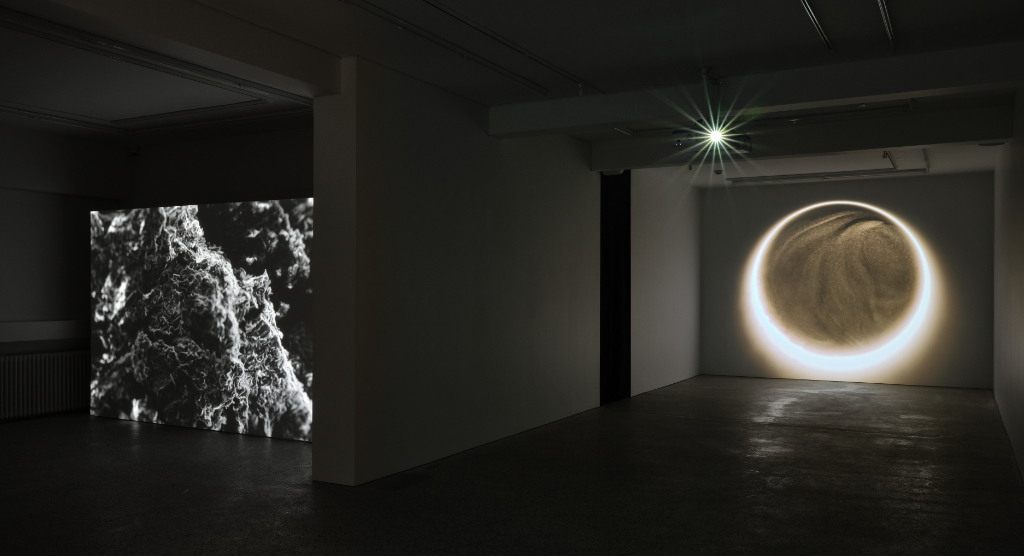
Icelandic artist Sigurður Guðjónsson blends moving imagery and sound to create experiences built through the intimate observation of matter. Investigating cameras, optical instrumentation and natural objects, Guðjónsson brings to the fore the lurking phenomena happening inside them while he reveals their eerie and unique aesthetics.
In 2018, Guðjónsson was awarded the Icelandic Art Prize as Visual Artist of the Year for his exhibition Inlight. Set in the unique ASÍ Art Museum’s space – the chapel and morgue of a former hospital in Reykjavik – the three exhibits Fuser 2017, Scanner 2017, and Mirror Projector 2017, were large-scale projections visible across the different floors and walls of the building. Forming an intricate interplay between image and sound, the viewer was immersed in the bouncy rhythm and twinkling light of scanners, rollers and projectors.
His most recent solo show at BERG Contemporary, Unseen Fields, alludes to these spaces and objects that remain holed up for us in our daily lives. These are the visual sources of the two installations and series of photographs in the exhibition, which embark the viewer on a synergic journey through the gallery between sound, vision and space.
In Fluorescent (2021), the artist explores the dynamic motions occurring inside a fluorescent tube. The video shows how the phosphorus coating on the inside of the lamp glows after a high voltage ionizes argon molecules. The mesmerizing circular and cloudy imagery is accompanied by a humming soundscape formed by capturing the electromagnetic radiation emitted by the tube. The gallery room and the work seem to be utterly weaved, creating a spatial symbiosis.
Guðjónsson is currently amidst the experimentation process for the Pavilion of Iceland at the Venice Biennial in 2022. The artist is working closely with the curator and head of Arts at CERN, Mónica Bello, after participating in CERN’s Guest Artist programme in 2020. Although the artist can only reveal his work in Venice will be a large-scale audio-visual installation, we know it will be located in the Arsenale, one of the two main exhibition venues. Therefore, we must wait and see what he presents in the most expected art exhibition after the global pandemic.
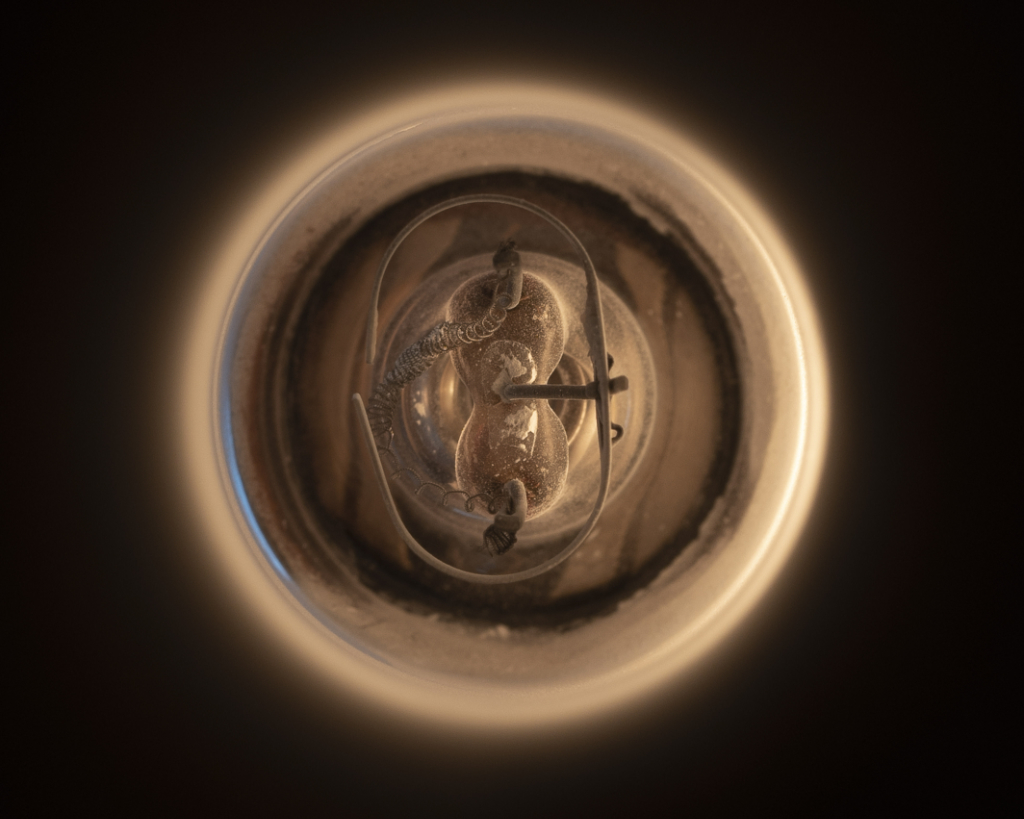

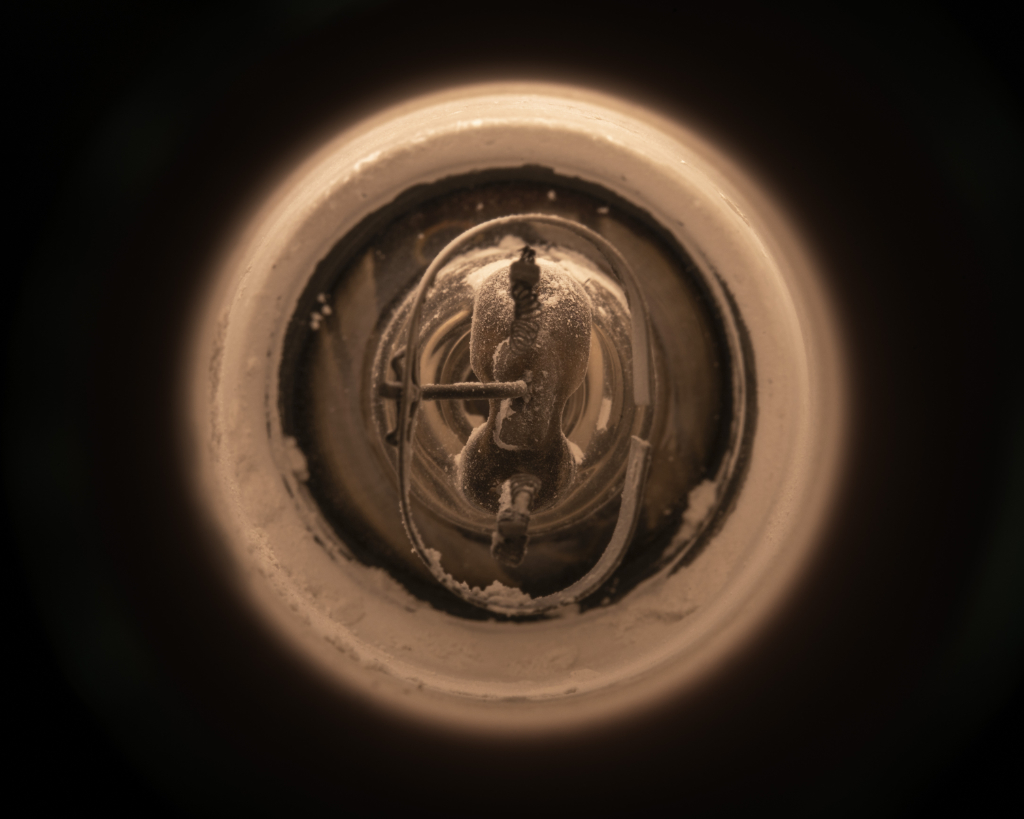

Your works investigate hidden aspects of cameras, optical instrumentation, scientific phenomena, and natural objects. Can you tell us more about your background and how this interest came about?
I studied fine art at the Iceland University of the Arts from 2000-2003, and quite early on in my first year, I found that the video and sound medium was what I was looking for. Before art school, I had played guitar in several metal bands in Iceland, so the Sony camcorder took over after I put the guitar aside, but at the same time, I kept experimenting with sound.
Places and spaces have always been a major inspiration for me. Then it developed into focusing more on things I found lying around, like machines, dead apparatus and other tools and transforming them into something more abstract. I started taking machines apart, and that´s where my interest in these hidden aspects of machinery started.
You have collaborated with musical composers, and your works are as much about the audio as they are about the video images, creating soundscapes in the exhibition space. Can you tell us more about the importance of sound in your practice?
I have always been inspired by how sound can open up new and unexpected dimensions when working with moving images. Therefore, the combination of sound and image has always been one important element in my process. I’ve always tried my best to apply an audio-sensibility to my visual work, even though they might be completely silent. I’d be thrilled if you could almost hear the sound through the visual movement of the piece, be it through rhythm in the material or otherwise if it’s silent.
You participated in 2019 in Arts at CERN’s Guest Artists programme. What attracted you to a scientific laboratory like CERN? How has this experience informed or enriched your practice?
I’ve been following the arts program at CERN for several years now. I have always been fascinated by the experimentation happening there, and their interdisciplinary approach inspires me profoundly. How it will appear in my artistic output time can only tell, but perhaps it’s already starting to show in my ongoing exhibition at BERG Contemporary, titled Unseen Fields.
What can you tell us about your solo exhibition at BERG Contemporary, Unseen Fields? What can we expect?
The title is a direct reference to places, spaces or things that I seek as a resource. These are not invisible places, but rather places that we come across in our daily lives but don‘t necessarily pay attention to, as they usually lurk in the back. The exhibition consists of two video installations, sound and a series of photographs created around these matters.
In one of the works in the show Fluorescent, 2021, you approach the ideas of light and material dynamics happening inside a fluorescent tube, accompanied by a sound composition formed by tapping into the electromagnetic radiation emitted by the subject. How would you describe these encounters between the audience and your work?
One of my main starting points is creating a universe that the viewer can travel through and experience rather than creating a singular object or memorabilia. In the past years, I have been thinking of video more as a source or material for installations rather than a linear experience within the image.
One might experience that the exhibition is like a time glass as we watch thousands of particles travel through the glass tube in Fluorescent (2021), for example. The exhibition space itself plays a part when selecting the works to be shown each time; the soundscape affects the space and imagery, the inner and outer world of the works, their function etc.
You’ll represent Iceland at the 59th Venice Biennale in collaboration with curator Mónica Bello. What can you advance us about your plans for Venice? What is the nature of the collaboration?
Right now, I’m in the midst of the experimentation process, so I prefer not to divulge exactly what might come of it. However, I can say for certain that I am working on a large scale audio-visual installation, which will be located in the Arsenale. It’s a pleasure to work with Mónica, and our collaboration greatly inspires me. As we come from two different backgrounds, she offers a fresh perspective on the project.
What is the chief enemy of creativity?
N/A.
You couldn’t live without…
Music.





